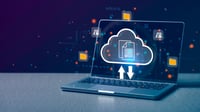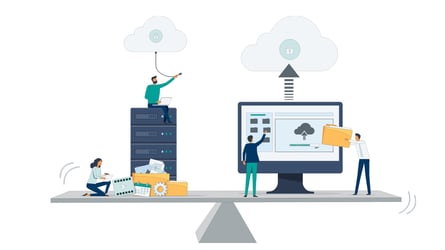It’s not always easy to clearly see the dividing line of ownership when using a software-as-a-service (SaaS) application. Its ease-of-use makes it seem part-and-parcel of any company using it. It’s “just another company account” from the employees’ point of view.
However, who owns what data is at the core of many data privacy and protection regulations. Understanding data ownership, then, is key to avoiding serious compliance problems that could put an organization at risk.
So, the question is, do you own your SaaS data?
The organization or business that creates the data they input, upload, create, etc. is the owner of the data. So, yes, you do own that data, but you are also responsible for its security.
Isn’t the SaaS provider responsible for security? Yes – and no.
SaaS providers operate what is known as The Shared Responsibility Model. This delineates roles and responsibilities in the SaaS environment. The “shared” part refers to the fact that both parties (the customer and the SaaS provider) agree to be responsible for different parts of the cloud.
SaaS providers are responsible for the security and management of the cloud infrastructure, or everything that makes that service run: proprietary software, middleware, hardware, servers, etc. The customer is responsible for security inside the cloud, meaning the different accounts, access to those accounts, and all the data they generate. Even if “the data” is a list which you only see, for instance, when accessing a customer relationship management application, it’s still the user organization’s data.
In the digital world, ownership is the same as responsibility. Customers not only own the data, they own the responsibility to keep that data protected. To do that, an organization must first understand all the data it owns. The next step is to protect that data, which usually means retrieving and backing it up, then digitally storing it securely.
Some SaaS providers may provide some backup services. However, these are not always at a frequent cadence of an organization’s choosing. A weekly backup hardly helps if a business requires restored data no older than a day, or several hours. Also, formats of SaaS-supplied backups may not match your organization’s needs.
Data loss due to errors (like accidental deletions) happen all the time. Outages of SaaS vendor operations still occur as well, which range from minor inconveniences to days-long interruptions. SaaS vendors are also targeted by various threat actors and ransomware gangs. Last year, hackers and ransomware groups targeted a wide range of SaaS-based vendors, including PayPal, Activision, ChatGPT, MOVEit Transfer, Roblox, Okta, and Mr. Cooper Group.
Ultimately, data ownership is about data sovereignty. Having a local copy of data gives any organization more control over it. Managers can then decide where it’s stored, who has access to it, and how it’s used. This is particularly important for businesses operating in regions with strict data protection laws.
It also helps prevent lock-in with a particular SaaS vendor. It is much easier to make a change in SaaS vendors when complete backups of data are available. Sovereignty, full control over all your data, no matter where it’s created, also ensures rapid restorations and recovery in the event of any data disaster.
Ultimately, data sovereignty and complete backups of SaaS data give organizations fewer things to worry about in data privacy and protection regulation – now, or in the future.





